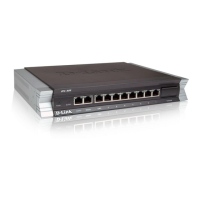Active Routes:
Network Destination Netmask Gateway Interface Metric
0.0.0.0 0.0.0.0 192.168.0.1 192.168.0.10 20
10.0.0.0 255.0.0.0 10.4.2.143 10.4.2.143 1
10.4.2.143 255.255.255.255 127.0.0.1 127.0.0.1 50
10.255.255.255 255.255.255.255 10.4.2.143 10.4.2.143 50
85.11.194.33 255.255.255.255 192.168.0.1 192.168.0.10 20
127.0.0.0 255.0.0.0 127.0.0.1 127.0.0.1 1
192.168.0.0 255.255.255.0 192.168.0.10 192.168.0.10 20
192.168.0.10 255.255.255.255 127.0.0.1 127.0.0.1 20
192.168.0.255 255.255.255.255 192.168.0.10 192.168.0.10 20
224.0.0.0 240.0.0.0 10.4.2.143 10.4.2.143 50
224.0.0.0 240.0.0.0 192.168.0.10 192.168.0.10 20
255.255.255.255 255.255.255.255 10.4.2.143 10.4.2.143 1
255.255.255.255 255.255.255.255 192.168.0.10 192.168.0.10 1
Default Gateway: 192.168.0.1
===================================================================
Persistent Routes:
None
The corresponding routing table in NetDefendOS will be similar to the following:
Flags Network Iface Gateway Local IP Metric
----- ------------------ -------- -------------- --------- ------
192.168.0.0/24 lan 20
10.0.0.0/8 wan 1
0.0.0.0/0 wan 192.168.0.1 20
The NetDefendOS way of describing the routes is easier to read and understand. Another advantage
with this form of notation is that you can specify a gateway for a particular route without having a
route that covers the gateway's IP address or despite the fact that the route covers the gateway's IP
address is normally routed via another interface.
It is also worth mentioning that NetDefendOS allows you to specify routes for destinations that are
not aligned with traditional subnet masks. In other words, it is perfectly legal to specify one route
for the destination address range 192.168.0.5 to 192.168.0.17 and another route for addresses
192.168.0.18 to 192.168.0.254. This is a feature that makes NetDefendOS highly suitable for
routing in highly complex network topologies.
Displaying Routing Tables
It is important to distinguish between the routing table that is active in the system, and the routing
table that you configure. The routing table that you configure contains only the routes that you have
added manually (in other words, the static routes). The content of the active routing table, however,
will vary depending on several factors. For instance, if dynamic routing has been enabled, the
routing table will be populated with routes learned by communicating with other routers in the
network. Also, features such as route fail-over will cause the active routing table to look different
from time to time.
Example 4.1. Displaying the main Routing Table
This example illustrates how to display the contents of the default main routing table.
Command-Line Interface
To see the configured routing table:
4.2.2. Static Routing Chapter 4. Routing
137

